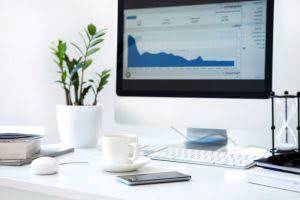
This flexibility makes cost accounting an ideal tool for businesses that operate in rapidly changing environments or that need to make quick decisions. For example,a business might need to change its product mix in response to a change in customer demand. Cost accounting can be used to track the cost of each component of the product mix and help the business make quick decisions about which products to produce more or less of. The strongest advantages of cost accounting are cost control, inventory valuation, and adaptability.
Great! The Financial Professional Will Get Back To You Soon.

Cost accounting doesn’t just help you stay on top of your costs – it also allows you to make (any necessary?) changes along the way. By analyzing your costs frequently, on a weekly or monthly basis, you can identify the areas where you can reduce costs, and take the necessary steps to act accordingly. For instance, a company can discover that a twelve-hour shift on a particular machine isn’t necessary and that ten hours produce the same output. This insights and his love for researching SaaS products enables him to provide in-depth, fact-based software reviews to enable software buyers make better decisions.
Other Methods of Costing
For example, in cost accounting you can use activity-based costing methods, which assign costs to specific activities rather than products or services. This would also not be acceptable in financial accounting because it would not provide accurate information about the overall financial position of the company. Activity-based costing (ABC) is a cost accounting technique used to ascertain the cost of activities involved in the production of an item. Under this method, costing accountants try to allocate overhead and indirect costs that are not included in standard costing.

Policies: Business and Others
- During the first weeks, participants learn what costs are and how to distinguish them from expenses or cash flows.
- Apart from the initial investment, there will be additional finance charges and some other costs necessary to keep the asset operational.
- On the other hand, when the cost of manufacturing a product is more than the revenue, the company suffers a loss.
- Save taxes with Clear by investing in tax saving mutual funds (ELSS) online.
- Other, usually lower cost items or supporting material used in the production of in a finished product are called indirect materials.
- Operating costs are the costs to run the day-to-day operations of the company.
Our GST Software helps CAs, tax experts & business to manage returns & invoices in an easy manner. Our Goods & Services Tax course includes tutorial videos, guides and expert assistance to help you in mastering Goods and Services Tax. Clear can also help you in getting your business registered for Goods & Services Tax Law. The VAT reduction is applied consistently to all stages of import, production, processing, and commercial business. The primary reason, of course, is that most people cannot agree on what an asset’s present value is, whereas the price paid as the asset’s acquisition cost is beyond dispute (in most cases).
- This flexibility makes cost accounting an ideal tool for businesses that operate in rapidly changing environments or that need to make quick decisions.
- Financial accounting is meant for stakeholders outside the business, whereas cost accounting is meant for those on the inside, responsible for making critical decisions.
- Examples of such assets include cash, government securities, and amounts to be received from debtors.
- This guide will offer you an in-depth explanation of what cost accounting represents, the different cost accounting methods, how you can set up the process for your small business accounting, and much more.
- Also, the cost of recording and updating asset values on a regular basis is time-consuming and expensive.
- When estimating labor costs, it is essential to factor in labor rates, required skillsets, overtime hours worked, and any additional benefits the employer provides, such as vacation time or health benefits.
Measures to safeguard against impersonation of tax agencies and officials
The Institute of Cost and Management Accountants (ICMA) defines costing as the technique and process of ascertaining costs. The weighted average method is generally more accurate, but the per-unit method is simpler and easier to understand. Under this concept, all costs are allocated across multiple expense categories according to specific criteria, such as job roles or departments within the organization. Finally, changes in activities over time necessitate frequent updating of the process, which adds further cost and complexity to the system. Life Cycle Costing (LCC) is approach companies use when evaluating investments, projects, or contracts over time rather than just looking at short-term goals or results. There are a number of sources that confirm that cost accountants are in demand and will continue to be sought after over the next decade.

Between 2021 and 2031, 81,800 new positions are set to be available in this field, according to BLS data. Cost accountancy has been developed through a process of trial and error, which means instead of being an exact science, it is an acquired skill based on practice. You can access the software and manage your costs from any device with an internet connection, basics of cost accounting by simply downloading the Deskera mobile app. Our goal is to deliver the most understandable and comprehensive explanations of financial topics using simple writing complemented by helpful graphics and animation videos. We follow strict ethical journalism practices, which includes presenting unbiased information and citing reliable, attributed resources.
- The total production costs of a company are calculated by evaluating the fixed and variable expenses.
- Standard costing is practical for budgeting and decision-making, as it provides a clear picture of the expected costs of production.
- It is used to determine the impact on expenditure and profit if a single unit of production exceeds the estimated one.
- Cost accounting, as you have probably already realized by now, is an indispensable part of any company’s financial management.
- For many firms, cost accounting helps create and measure business strategy in a more organic way.
- In this method, companies establish standard materials, work, and overhead costs based on expected usage levels necessary for production.
- She has worked in multiple cities covering breaking news, politics, education, and more.
Recommended if you’re interested in Business
Besides, as there is no uniform method followed, there is a possibility of two different cost accountants obtaining different results with the same information. Unlike financial accounting, which is typically carried out annually, cost accounting is carried out on an as-needed basis to help the management understand and compare the cost of production. In this study, 90.20% of the surveyed managers agreed that cost accounting helps them identify unprofitable activities. As it is a tool for a more accurate way of allocating fixed costs into a product, these fixed costs do not vary according to each month’s production volume. For example, the elimination of one product would not eliminate the overhead or even direct labour cost assigned to it. Activity-based costing (ABC) better identifies product costing in the long run, but may not be too helpful in day-to-day decision-making.
Standard cost accounting is a traditional method for analyzing business costs. It assigns an average cost to labor, materials and overhead evenly so that managers can plan budgets, control costs and evaluate the performance https://www.bookstime.com/ of cost management. Many small businesses prefer standard cost accounting due to its ease and simplicity. The two main types of cost accounting are activity-based costing (ABC) and traditional costing.
Factory Overhead

